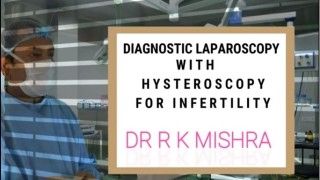Exploring the Surgical Dilemma: Laparoscopy's Contraindication in Generalized Severe Peritonitis
Add to
Share
2,309 views
Report
2 years ago
Description
Peritonitis, an inflammatory condition of the peritoneum (the membrane lining the abdominal cavity), can range from mild and localized to severe and generalized. In cases of generalized severe peritonitis, the condition becomes a surgical emergency that demands prompt intervention to save a patient's life. However, when it comes to the choice of surgical approach, the suitability of laparoscopy becomes a topic of significant debate. Laparoscopy, a minimally invasive surgical technique, has revolutionized the field of surgery in numerous ways. Its benefits include smaller incisions, reduced pain, shorter hospital stays, and quicker recovery times. Nonetheless, the suitability of laparoscopy in cases of generalized severe peritonitis is a matter of ongoing controversy. In this article, we will delve into the reasons why laparoscopy is contraindicated in such cases. 1. The Nature of Generalized Severe Peritonitis Generalized severe peritonitis typically results from bacterial contamination of the peritoneal cavity, often due to ruptured viscera, perforated ulcers, or complicated appendicitis. This contamination can lead to a rapid and aggressive inflammatory response, with the potential for septic shock, multiple organ failure, and death. In such cases, controlling the source of infection and performing thorough abdominal exploration are paramount. 2. Diagnostic Challenges One of the primary reasons for the contraindication of laparoscopy in generalized severe peritonitis is the challenge of making an accurate diagnosis through a minimally invasive approach. Generalized peritonitis can present with diffuse intra-abdominal pus, fibrinopurulent exudate, and multiple adhesions, which are difficult to assess with laparoscopic visualization. In contrast, open surgery allows for better tactile feedback, easier identification of the source of infection, and a more comprehensive exploration of the abdominal cavity. 3. Risk of Missed Pathology Laparoscopy's limited field of vision may result in missed pathology in cases of generalized severe peritonitis. This can lead to incomplete source control and the persistence of infectious material within the peritoneal cavity. Missing a perforated viscus or an abscess can have dire consequences for the patient, potentially necessitating a second surgery to address the oversight. 4. Technical Challenges Performing laparoscopy in the presence of generalized severe peritonitis presents technical challenges. Adhesions, distorted anatomy, and the risk of iatrogenic injury become more pronounced in this scenario. These technical difficulties may compromise the surgeon's ability to carry out an effective and safe procedure, increasing the risk of complications. 5. Hemodynamic Instability Patients with generalized severe peritonitis often present with hemodynamic instability due to septic shock. The pneumoperitoneum created during laparoscopy can further compromise the patient's cardiovascular stability, potentially leading to hemodynamic collapse. In contrast, an open approach allows for more immediate source control and less interference with the patient's hemodynamics. 6. The Importance of Source Control In cases of generalized severe peritonitis, the primary goal of surgery is source control, which involves identifying and addressing the cause of peritoneal contamination. Open surgery offers more versatility in addressing various pathologies, including bowel resections, repair of perforated viscera, and drainage of abscesses, which may be challenging to achieve through laparoscopy. 7. Patient Outcomes and Safety Ultimately, the decision to use laparoscopy or open surgery in generalized severe peritonitis should prioritize patient safety and outcomes. While laparoscopy offers numerous advantages in many surgical scenarios, its limitations become apparent in the face of life-threatening conditions like severe peritonitis. The potential for missed pathology, technical challenges, and the impact on hemodynamic stability should give pause to surgeons considering laparoscopy in these cases. 8. Infectious Complications and Risk of Sepsis The use of laparoscopy in generalized severe peritonitis carries a higher risk of infectious complications. In a minimally invasive procedure, there is a risk of aerosolization of infected material. This aerosolization can potentially expose the surgical team to infectious agents, increasing the risk of post-operative infections, including healthcare-associated infections. Such infections can lead to sepsis, a life-threatening condition characterized by a systemic inflammatory response to infection. In cases of severe peritonitis, where patients are already at high risk for sepsis, it is crucial to minimize any additional factors that could exacerbate this risk. 9. Delay in Surgery and Its Consequences Laparoscopy may also introduce a delay in the surgical management of generalized severe peritonitis. The setup and equipment required for laparoscopy can be time-consuming, and this delay can be detrimental to the patient's overall prognosis. In contrast, open surgery can be initiated more rapidly, allowing for a more timely intervention to address the source of infection. 10. Controversy and Ongoing Research It's important to note that the contraindication of laparoscopy in generalized severe peritonitis remains a topic of debate within the surgical community. There are ongoing studies and trials aimed at determining the safety and efficacy of laparoscopy in these cases. As technology advances and surgical techniques evolve, it's possible that future guidelines may provide a more nuanced approach to the use of laparoscopy in severe peritonitis, potentially defining specific scenarios where it can be safely employed. 11. Patient Selection and Individualized Care Ultimately, the decision to use laparoscopy or open surgery in cases of generalized severe peritonitis should consider the patient's individual characteristics, the surgeon's expertise, and the specific clinical scenario. Some patients with localized severe peritonitis or early stages of the condition may still benefit from laparoscopy, as their condition may be less complex. In these situations, the advantages of minimally invasive surgery, such as reduced post-operative pain and shorter hospital stays, might outweigh the potential drawbacks. In conclusion, the suitability of laparoscopy in the context of generalized severe peritonitis remains a contentious topic in the field of surgery. While laparoscopy has brought about significant advancements in surgical practice, its contraindication in severe peritonitis is rooted in the need for immediate source control, accurate diagnosis, and patient safety. As with any medical procedure, the decision to use laparoscopy or open surgery should be based on a careful assessment of the individual patient's condition and the potential risks and benefits associated with each approach.
Similar Videos






